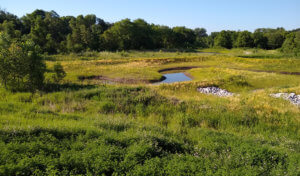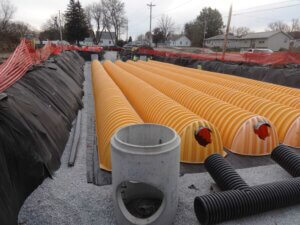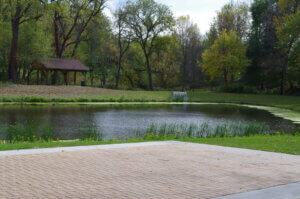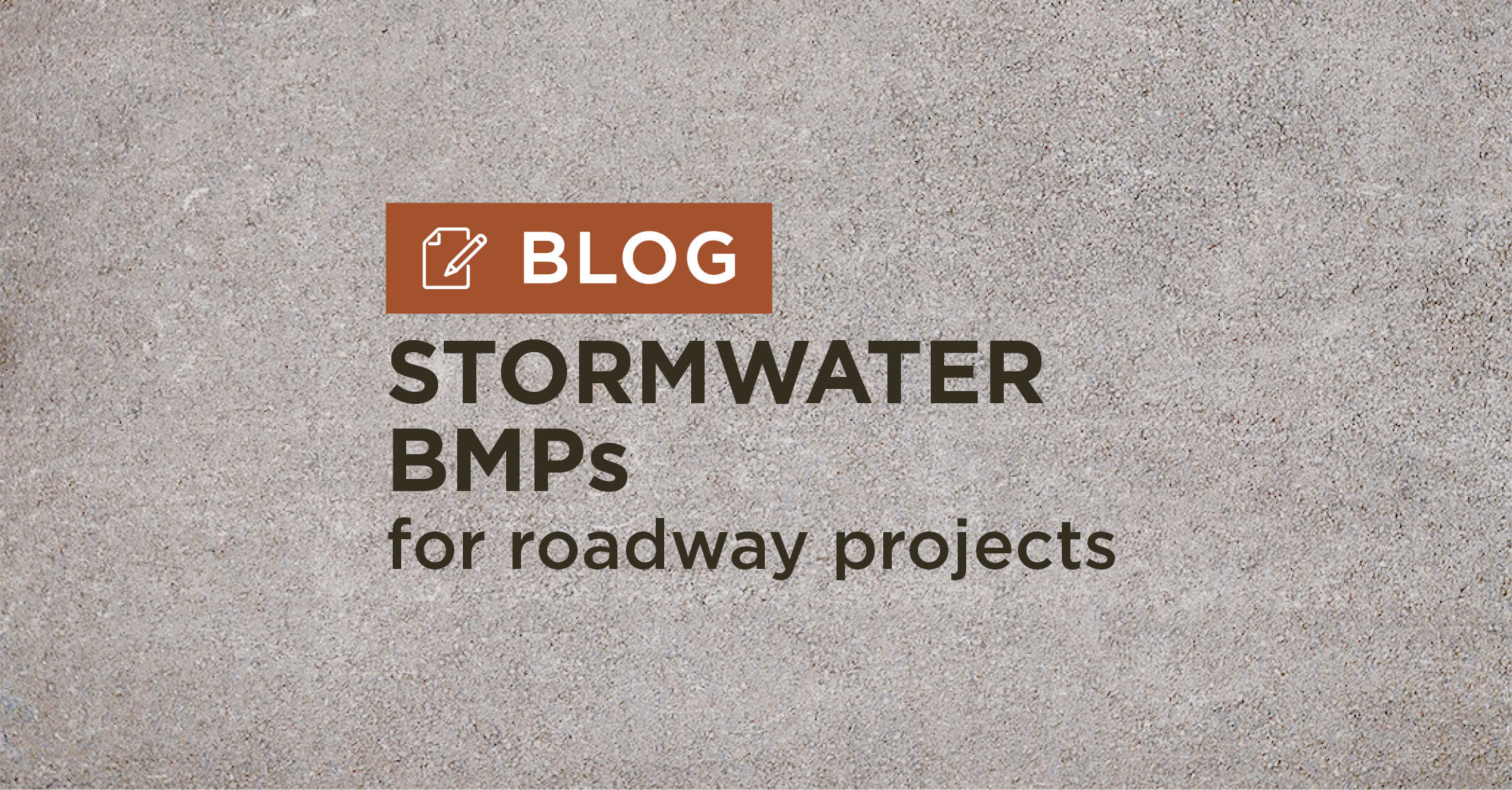Using BMPs to Address Stormwater Issues
Uncontrolled stormwater runoff is a significant factor in the degradation of surface water quality and can lead to costly overflows that result in flooding and dangerous public health hazards. As urban development continues to surge, so do these associated issues. To address this growing problem, innovative strategies and technologies are being developed to both manage and monitor stormwater runoff more efficiently.
Benefits of Effective Stormwater Management
Stormwater management is the planning, implementation, and maintenance of practices to control the changes in stormwater runoff caused by human actions. This operation is an essential part of environmental protection, as it helps to reduce the number of pollutants and sediment that can be carried away to local waterways. In the past, stormwater management was typically a secondary concern for municipal leaders, following water supply and wastewater management. In recent years, however, stormwater management efforts have grown as municipalities recognize the need and benefits of institutional stormwater programs.
Regulatory requirements often drive investments to deal with combined sewer overflows, pollution, flooding, and erosion in local streams and rivers. Urban water planners hope to benefit from integrating management across water sectors for other municipalities. Stormwater management is here to stay; no matter the driving cause, the Snyder & Associates team is here to help.
Stormwater Management in the Transportation Sector
Stormwater management in transportation is especially vital in collecting and cleaning runoff. While streets, roads, and highways provide essential benefits in transporting goods, people, and services, they can become conduits for delivering pollutants into the water system. Runoff from these surfaces can carry everything from heavy metals from car tires, brakes, and engine wear to hydrocarbons from engine lubricating fluids. If poor stormwater management practices exist, these pollutants can enter the aquatic environment and degrade the ecosystem.
Engineering design is key in diminishing these effects, with specific strategies tailored by location or project to incorporate Best Management Practices (BMPs). One of our stormwater experts, Steve Klocke, P.E., detailed several of our team’s most common practices and design strategies for transportation-related stormwater projects.
Bioretention Cells
A bioretention cell is a filtration or infiltration basin that uses vegetation, soils, and other natural materials to remove pollutants from stormwater runoff. These systems are an effective and attractive way to manage stormwater runoff that can be used in developed and undeveloped areas. There are many benefits to using bioretention cells, including improved water quality, reduced runoff, and improved aesthetics. However, one downfall of this practice is that routine maintenance is required to manage vegetation and clean debris from the cells. If proper action is not taken, backups can occur, resulting in an ineffective system.

The Fourmile Wetland was created to help removed stormwater from Polk County’s largest watershed spanning 76,600 acres.
Constructed Stormwater Wetlands
A constructed stormwater wetland is an engineered system capable of removing sediment, nutrients, and other pollutants from larger volumes of water while also providing stormwater detention. This stormwater management option offers a variety of benefits, including reducing flooding, improving water quality, and providing habitat for wildlife.
As a manmade feature, constructed stormwater wetlands are created by excavating a basin with a mixture of shallow areas and deeper pools and planting native wetland plants. The basin is fed by a stormwater pipe or a natural waterway like a stream or creek. As concentrated stormwater rushes into the wetland, it spreads out, and the velocity drops as it slowly meanders its way through the wetland, allowing sediment to settle out and plants to filter out pollutants. During large storm events, the wetland provides temporary detention and storage for floodwater.
Initial upkeep for these systems is focused on establishing the wetland vegetation for the first few years. Future maintenance activities involve mowing side slopes several times a year, removing invasive species, monitoring sediment accumulation in the forebay and normal pool areas, and removing sediment as required. It is important to remain consistent in the upkeep of stormwater wetlands as an unmaintained constructed wetland may become an eyesore and nuisance to the community. With extreme neglect, a constructed wetland may stop filtering the rainwater entirely. This could allow trash and pollutants to enter local streams, causing flooding or safety concerns — and repair expenses may far exceed the cost of regular maintenance.

Stormwater detention vaults were in place during Jasper Street construction in Pleasantville, Iowa.
Detention Vaults
Providing stormwater detention for roadway runoff can be challenging, especially in an urban setting where right-of-way and utilities limit the available space. The most economical approach for stormwater detention is to acquire land adjacent to the roadway. When that option is not possible or practical, underground detention vaults may be utilized.
Various underground detention vaults (or chambers) are available, ranging from a single concrete box or a series of pipes to manufactured concrete chambers or modular plastic units. These structures can store large amounts of stormwater and slowly release it after the rain has passed, preventing uncontrolled runoff and protecting our waterways and infrastructure.
Permeable Paving
Permeable paving is an increasingly popular choice for both residential and commercial applications. This type of paving allows water to pass through its surface, making it an ideal solution for parking lots, alleys, and low-volume roadways, as it will enable stormwater to be captured and treated while still allowing traffic flow.
Permeable pavers are widely used and available in various styles, colors, and performance levels. A porous asphalt pavement and permeable concrete are viable options in the appropriate setting. These

The parking lot of Armstrong Park is created of permeable pavers allowing stormwater to seep through.
pavements provide numerous benefits, including improved drainage, reduced runoff, groundwater recharge, and reduced ice and snow accumulation.
Although this can be a great alternative for parking lots, sidewalks, and driveways, permeable paving may require special considerations for use in high-traffic or high-speed areas as it can have a lower load-bearing capacity than conventional pavement types.
Mechanical Separators
Mechanical separators are a stormwater management technique typically used in urban areas to remove suspended sediments and trash, debris, and oil from stormwater. These include proprietary systems such as Hydrodynamic or Vortex separators, gravity separators, filtration systems, and simpler structures like storm intakes with a sump or insert to capture sediment. This option is particularly viable when space limitations prevent using other BMPs as it is incorporated into a stormwater intake or located immediately adjacent to the intake.
To treat the runoff, these systems put captured stormwater through screenings and churning to remove unwanted contaminants before releasing the cleaned stormwater. Depending on the type and size of the structure, they can be costly and are typically used only in heavily urbanized areas where other practices are impractical.
Selecting the Right Stormwater Management System
Every community is different, and every stormwater project has distinct needs. As a result, there is no one-size-fits-all solution when it comes to stormwater management. With so many different options on the market, it can be difficult to know where to start.
Our experts consider factors like available right-of-way space, current utilities in the area, desired level of treatment, and budget when determining which process or combination of processes would provide the best results. However, even with our years of practical knowledge and experience, all stormwater practices require some analysis or modeling to properly size and design. With this more precise data, our engineers can pinpoint capacity levels and provide the right-sized solutions to combat localized flooding and waterway degradation.
Funding Considerations Drive Project Success
On the investment side, transportation stormwater management also requires thoughtful strategy. Setting aside sufficient funding for stormwater management is key, as is finding ways to make up for funds if projects fall short of their financial goals. Creative funding sources such as low-interest loans, grants, and credits can help finance these efforts while maintaining budgetary goals and deadlines. Our team has decades of experience navigating the complex application process that often accompanies grant funding and may be able to help your community find the necessary funding to jumpstart your next project.
Ultimately, transportation stormwater management is a complex issue with multiple considerations. Our civil engineers and transportation professionals continuously work to find innovative approaches to ensure that new construction and renovation projects have sustainability and stormwater infrastructure in mind.
